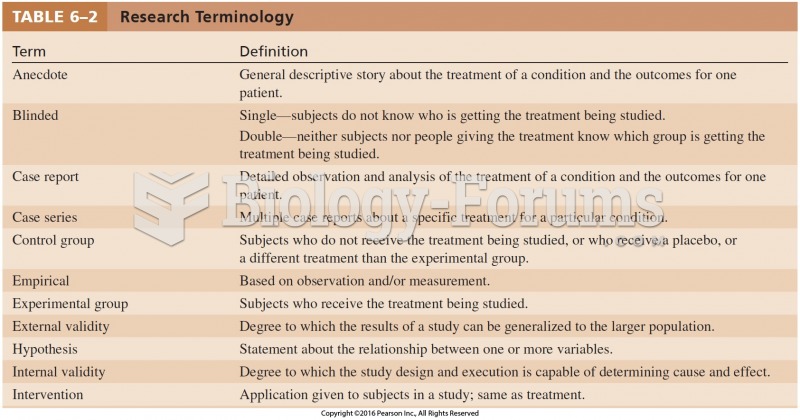Answer to Question 1
ANS: B
Any one outcome may be influenced by a large variety of factors. It is also difficult to limit those factors to health care ones because environmental factors, patient factors, and others are involved in the situation.
Although experimental research may be more interesting to some people, it is not significantly more interesting to exclude interest in outcomes research. Any one outcome may be influenced by a large variety of factors. It is also difficult to limit those factors to health care ones because environmental factors, patient factors, and others are involved in the situation.
There are many individuals interested in quality patient care outcomes. Any one outcome may be influenced by a large variety of factors. It is also difficult to limit those factors to health care ones because environmental factors, patient factors, and others are involved in the situation.
Sufficient education is needed for all research endeavors. Any one outcome may be influenced by a large variety of factors. It is also difficult to limit those factors to health care ones because environmental factors, patient factors, and others are involved in the situation.
Answer to Question 2
ANS: A
A standard of care is a norm on which quality of care is judged. Clinical guidelines, critical paths, and care maps all are based on objective data that are evidence based and define standards of care.
Tradition is a method that is often based on trial and error that worked in certain situations, and has been carried over to subsequent generations of care providers. Traditional results may be credible, but are not empirically tested, and therefore do not fit the criteria of evidence-based practice.
Trial and error often can be haphazard in approach; it is not conducted in an objective, scientific, and rigorous method. Trial-and-error results may be credible, but are not empirically tested, and therefore do not fit the criteria of evidence-based practice.
Practitioner preference may be a conglomeration of many methods, including tradition, trial and error, anecdotal results, as well as evidence-based practice. However, it is not a systematic approach, empirically tested, and therefore does not fit the criteria of evidence-based practice.







